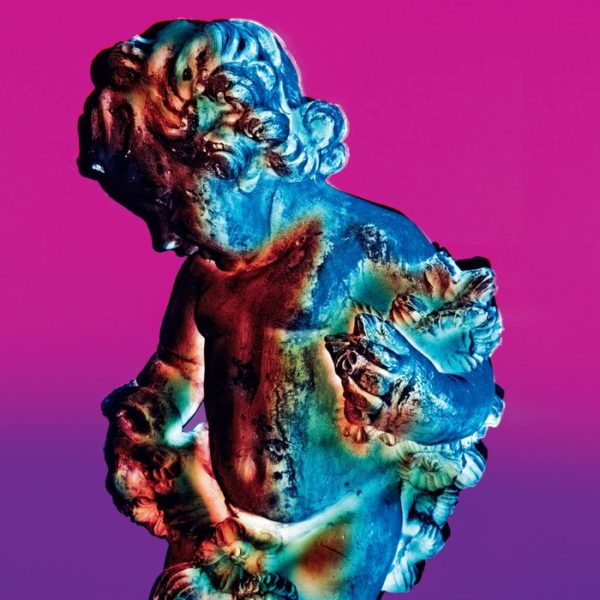Around eleven, twelve years ago when the NME on his final moments of opinion leadership declared ‘Nu Rave’ and bands like Klaxons, Shitdisco, Late Of The Pier and Justice to be the ‘next big thing’ I was a bit confused at first. Because being an uneducated boy in my early twenties I didn’t get the historical connection at first. All I saw was a bunch of indie acts that now suddenly had a keyboard right next to the standardized band set-up I’ve come to known. Growing up in East-Germany in the 1990s I had a different connection to the word ‘rave’. For me it was always connected to happy-hardcore-hands-up dance music that was sometimes often labelled ‘eurotrash’. Over 180 beats per minute, synthetic and way too often sounding quite cheap. You know Scooter, right? Well, yes, that was my understanding of rave as a teenager. But of course, that was wrong and it turns out later that the music journalists of 2007 meant something entirely different when they talk about ‘nu rave’ because in the United Kingdom the ‘old rave’ was connected with a different set of artists and associations: Madchester, The Hacienda, Factory Records, Happy Mondays, Acid House, Ibiza, The Stone Roses and … well, New Order.
Now, one decade later this specific period of time of the late 80s and early 90s still fascinates me to this day. There are a few books, documentaries and historical essays about that old rave scene that document it well enough so that I don’t need to explain the entire thing to you right here. This one’s a good old TV report from 1990 on YouTube. You’ll also find the joyful film 24 Hour Party People there with Steve Coogan as charismatic Mancunian leader Tony Wilson. This is a great fictional sum-up of it all. In terms of books I recently read the biography of New Order‘s Bernard Sumner – Chapter And Verse – once again and also consider it to be a great document of that era (as well as one about one of pop music’s most underrated characters). So, today I’d like to briefly remind you about this great sound and maybe introduce some of you to it in the first place. And Technique by New Order is a great way of doing it.
Ever since the fateful suicide of their former frontman Ian Curtis the remaining members of Joy Division managed to slowly move their sound away from post-punk to a more electronic and progressive sound. If you play Unknown Pleasures right next to Technique the two records couldn’t be further away from each other – and there are ‘only’ ten years between them. Released in 1989 the fifth full-length by New Order marked their most consequent adventure into electronic dance music to this point. Singles like Fine Time and Round & Round as well as the great album tracks Mr. Disco and Vanishing Point were heavily inspired by the club sounds of Ibiza where the band also recorded the majority of the record. According to Sumner’s biography it was an excessive recording process … well, due to the parties and not the actual recording. The tight beats, the pumping bass sequencers and the weird samples (there are sheeps on Fine Time. What the heck?) play right along with more familiar sounding New Order vibes (that are still present on the album). Notoriously grumpy bassist Peter Hook later described the record as an ongoing battle between himself and the sequencer because traditional instruments don’t play the main part on Technique. However, it’s still quite organic and does indeed sound like a band record. And that’s something that describes many other productions of the rave era back then.

The ‘Acid House’ Generation
The ‘Madchester Rave’ movement saw traditional indie music teaming up with house music spirit in a pretty new and progressive way. Back in the late 80s electronic dance music was still a niche that slowly but steady looked for its place in the mainstream music scene. There was a raw and analogue element to it, partly also quite naive and absurd but it was a time of experimentation and adventurousness where these musicians tried to find a way to bring different worlds together. Although they all embraced electronic music there was no digital approach towards it, simply because the technique wasn’t ready at that point.
Thirty years later pretty much all electronic music is digitalized, dominated by patterns and clear structures. Modern day techno and synthpop is continuously striving for perfection in their sound and often it feels to me as if the human element itself is reduced to a necessary evil that’s barely sensible anymore in contemporary music. Well, I don’t mean to over-simplify it but if you compare today’s dance music to those sounds on a record like Technique there is a different notion sensible. Bernard Sumner was never a good singer and just imagine how stupid it would sound to put Autotune on him. Many of those tunes mix classic analogue bass and guitar play and organic drums with summerly house pianos and synth, often using vocals. And it didn’t need to be ‘on tune’ all the time which made it charming. It was music on he brink between pop and house music, ultimately resulting in a quite positive vibe. Okay, there’s a reason why this sort of music went really well together with the drug Ecstasy. It was all about love, baby.
It’s a fascinating musical microcosm that deserves a bit more pop-historical recognition. A lot of things did change over the past thirty years but some didn’t and the fact that bleak societal times often call for an even more excessive is probably still pretty accurate these days. As a little beginner’s guide to that era I compiled a mix of some personal favourites and rarities under my Burnout Sumner alias (get the pun?) called Hacienda High Times and you can find it above. It features music from that special era between 1988 and 1993 and gives a good feeling of it. New Order‘s Technique album is heavily recommended as is Bummed by the Happy Mondays, Screamadelica by Primal Scream and the self-titled 1989 debut by The Stone Roses. I hope this is enough acid-dripping material for you today and apart from the music don’t forget that the most important message remains as important as it has always been: Love!



